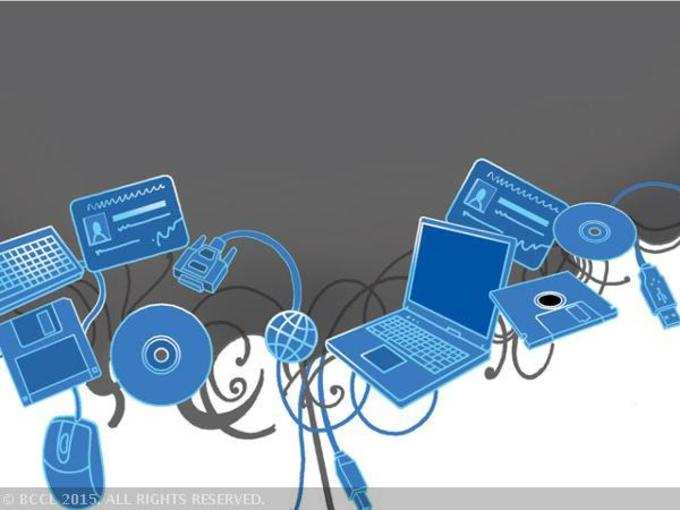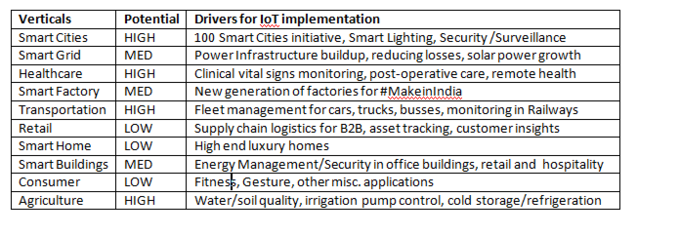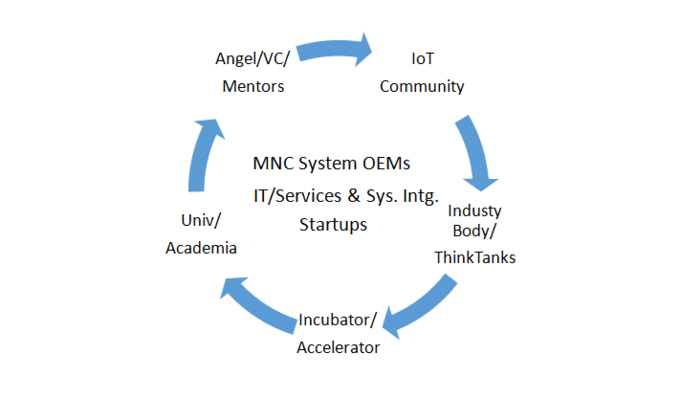
Another year ends today. Looking back we see this year as the year of innovations. Science and Technology made real what were earlier conceived merely as sc-fi fiction- from driverless cars to making the closest match of a robot to human. India too saw the advent of Internet of Things. We saw MI and
Looking at the trends, consumer
Analog Devices played a major role in the growth. Somshubhro Pal Choudhury, MD, Analog Devices India, talks about the Indian scenario, trends, global scenario, some predictions of 2016 and the next big thing in IoT.
1. Where is the world positioned in the IoT space?
IoT is making descent progress across multiple verticals globally, albeit at different pace for each.
Below are a few examples of different market verticals and how IoT is shaping up in these verticals.
• Smart Watches and Wearable – This vertical has taken off with wide range of fitness gadgets and smart watches. The volume is in consumer centric gadgets today. The market for remote healthcare and disease management and tracking with clinical grade devices is slower to emerge.
• Smart Homes and Appliance - There are varied use cases. The driver for Smart Appliances is primary returns, warranty and scheduled maintenance more than anything else. The dream of Smart Homes has been on the radar for more than 2 decades now, but it will still be only for high-end homeowners who can afford it.
• Smart Meters/Smart Grid - Already close to 50% of the homes in US have smart meters and Europe is deploying in a huge way. Asia is slow in adoption. In India it has happened only in the state of Maharashtra for a large scale deployment of the tune of 3M meters.
• Smart Buildings- Focus is more on energy management and security. We are seeing active deployment of energy management scenarios with automated HVAC and lighting control based on occupancy worldwide.
• Transportation – Mostly focused on fleet management of cars, trucks, busses via telematics. Several consumer centric gadgets and IoT solutions are available all around the world today in terms of plugging into the OBD2 port of the car and analytics to understand and schedule maintenance.
• Smart City - Primary driver would be Smart lighting to reduce energy usage first and foremost followed by security/surveillance. There is a big push worldwide to move to LED street lights and connected smart lights will give additional benefits along with this LED switchover.
• Industrial Automation – It would be a slow start in terms of IoT getting into the current Industrial Automation systems, but monitoring of the equipment to predict failure, asset tracking etc. are already starting to happen in a large way.
2. Where is India positioned in the space?
India has two plays in IoT. First, the business opportunities of
IoT business opportunities in India are just starting. Consumer has been a slow start compared to the other developed countries.
From an India context, here is a quick analysis of the potentials moving forward.

From an ecosystem and talent standpoint, IoT ecosystem in India is illustrated in Figure below. The Ecosystem for IoT in India has exploded in India, comprised of large Industry MNC OEMs, the IT Services Houses/Systems Integrators and Startups supported by other entities.
Almost all the major MNCs with design centers in India are doing IoT development from India. Significant portion of software, cloud, embedded software and systems integration work are being done out of India owning to the readily available talent base. Few companies have taken the initiative of running the entire IoT engineering from India like Analog Devices., whereas companies like Cisco have the

3. When will we see an IoT boom in India?
The ecosystem and talent boom is already happening as mentioned above. In terms of deployment and proliferation of IoT in a large scale, it would still take a few years. While the automation of rural pumps and telematics for fleet management and security are already happening, the Smart City security and LED Street light would probably come next along with energy management in commercial and retail spaces. We are hoping that the new factories for #MakeInIndia would be Smart Factories but it is likely that equipment and services business might go to global player’s more than Indian ones. We are also starting to see the need for Pollution monitoring, even monitoring the color of the smoke that is coming out from the chimneys.
The IOT enabled business models are changing in a big way from CAPEX to OPEX, more a services business. This plays to the strength and DNA of India. We love to play in the pay as you go model with opex and that creates a lower barrier to entry. Still somebody has to pay for the Capex and currently this funding is the missing piece.
4. What is holding it back?
A range of opportunities now open up in terms of monitoring different situations in industries, retail etc. and the first thing that needs to be done is education about the possibilities and then a Return on Investment calculation. The next phase is usually a pilot followed by evaluation and deployment. In that case it is no different than any buying pattern for any B2B sale. I would re- iterate to the myriad of IoT companies in India that IOT as not a unique technology and solution, but in essence culmination of different technologies and solutions that have been developed over the past decade, bringing them together in the most cost effective way which will solve a business problem (increase revenue, new business models or reduce cost) at a fraction of the original cost. That is why I believe the systems integrators and the IT houses that have so successfully embarked India on the IT world map, would have a major play in IoT globally.
5. What is the next big thing in IoT?
We will be hearing more about successful deployments of IoT in 2016 compared to the promise of use cases and a range of pilots that are currently ongoing. We now know about the possibilities with IoT. It is now a question of running Return on Investment calculations, doing a pilot and finally deploying it in large scale, on a case by case basis, from vertical to vertical.
6. What are the factors that are driving the space in the world?
The concept of IoT is not a new. Smart Metering has been active for the last 10 years and Analog Devices has close to 40M meters with Radio enabled smart meters globally deployed. What we are seeing now is that all the components of IoT like sensors, edge node, connectivity, gateway, cloud infrastructure, data analytics solutions etc. readily available, have come down incredibly in cost, development tools and solutions exist and it has become fairly easy to provide a fully integrated sensor to the cloud solution at a low price point up and running in a short time frame. So the business case for an IoT enabled solution is far easier now and talent exists to bring the solutions together rapidly. 5 years back, the same solution would have cost 10X more and implementation time would be 10X more. The other most interesting driver is now with all monitoring of the data, the business models are changing from Capex to Opex with a services centric approach and this is true business innovation enabled by technology.
7. How is the Indian IoT space different than global IoT space?
Adoption of IoT in India will follow the same principles of ROI calculation for each case. In India it would be easier to get customers on an opex based services model, provided investors can fund the actual deployment. The ROI for IoT in India needs to be measured differently compared to the developed world. The term coined by IOPT – Internet of People and Things is more relevant here. While in developed countries, IOT to get data from the field will require a wireless sensor network and automated collection of data on a regular basis as labor is so expensive. In India, what we need is cheap sensors, connected to mobile phones and a way to manage a labor pool to regularly get data on the vital conditions. A mobile and people based approached would work best in India.
(Image credits: Indiatimes, Analog Devices India)
